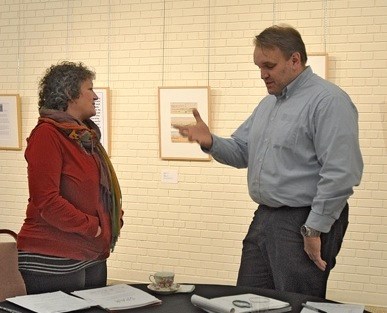The word out of a recent community forum in North Battleford hosted by the Saskatchewan Arts Alliance is that arts advocacy should be gearing up for upcoming federal and provincial elections.
Jessica Riess, communications and outreach officer, speaking at the forum held at the Chapel Gallery April 28, noted a federal election is scheduled for the fall of this year and a provincial election is expected in spring. An election is a chance to talk with candidates about why the arts matter, she said.
The SAA's new advocacy hub, an online tool of the organization's website at www.artsalliance.sk.ca, includes talking points to use in advocacy discussions or activities, under the pillars of Everyone Benefits from the Arts, Every Child Deserves an Arts Education, The Arts Innovate and Invest in the Arts.
Reiss pointed out their website also offers numerous resources to artists and those interested in the arts.
The community forum was also an opportunity to present results from the Saskatchewan Partnership for Arts Research project's first comprehensive survey of Saskatchewan artists. The survey is part of SPAR's Arts Ecology Project, a four-year study of the provincial arts ecology seeking to better understand artists' working conditions, connections and networks.
Results were presented by Dr. Ian McWilliams, research officer for SAA and a member of the SPAR research team, a multidisciplinary group involving individuals from the universities of Regina and Saskatchewan and the University of Melbourne.
Artists were asked about their workweeks. Although artists made it clear there was considerable variation in the allocation of their work time from week to week, their responses translated into an average workweek of 48.5 hours. Their week involved 24.5 hours devoted to their creative practice, eight hours of teaching or mentorship in a creative discipline and 16 hours working outside their creative practice.
It was also found artist respondents were both older and more highly educated than the Saskatchewan population as a whole. Nearly 47 per cent of artist respondents were 55 and over. Only 18 per cent of artist respondents were below 35. In comparison, 2011 census data for Saskatchewan reports people 55 years of age and over represent just 35 per cent of the population 18 and over while those 18-34 comprise 30 per cent of the population.
In the area of income, although 97 per cent of artist respondents had received income from their creative work, 43 per cent reported an average annual income from their art practice over the past two years of less than $5,000. Only 10 per cent earned more than $40,000 a year from their art practice. Overall, the data translates into an average artist income from their creative work of only $15,380. When including income derived from other types of employment outside the arts and culture, their overall gross income in 2013 rises to an average of $44,335.50.
SPAR will be doing another round of surveys this fall.



